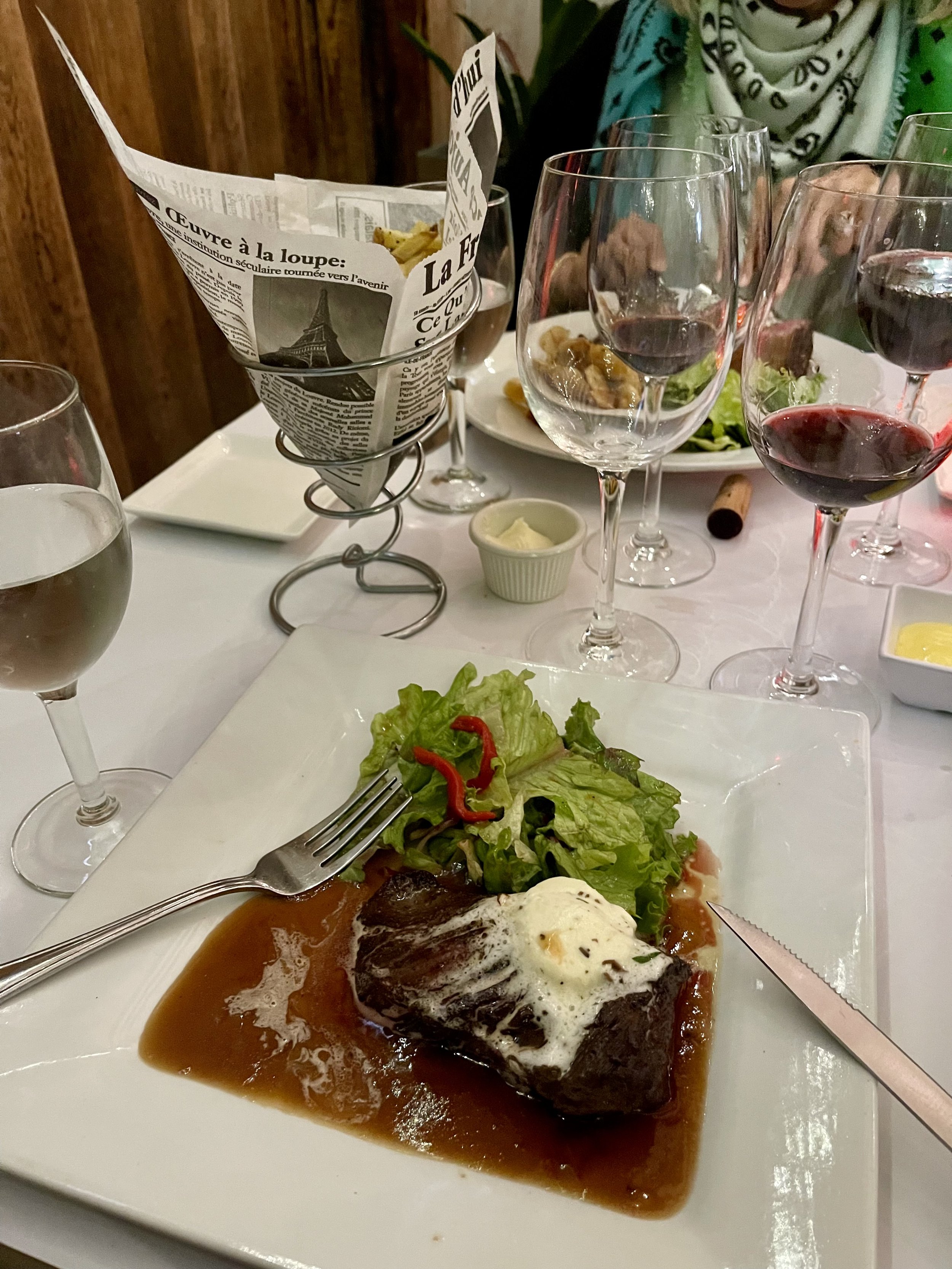Bordeaux Exactly As Intended
Last week, I had the pleasure of tasting the wines of Poesia (Argentina), Barde-Haut and Clos l'Eglise (St-Émilion and Pomerol) with Bordelais winemaker Hélene Garcin-Lévêque at our San Francisco location. Afterward, I joined her, Clyde, and K&L staff members for a Bordeaux-focused dinner on the patio of Mathilde French Bistro, which is walking distance from the store. Great little place! And I will say, the 2015 Poesia pairs beautifully with steak-frites.
Dinner at Mathilde, especially with Clyde as the master of ceremonies, is like something out of a Renoir painting—Luncheon of the Boating Party immediately comes to mind. Beneath a striped awning our group enjoyed lively conversation, excellent food, and splendid wines. It takes a great deal of discipline to maintain journalistic focus without surrendering to the pleasure of drinking as much wine as one would like. It’s an occupational hazard of every wine writer on the planet.
While miraculously maintaining temperance, eventually our wide-ranging conversation drifted onto the subject of sustainability—a topic close our hearts at K&L. The first thing I noticed about Poesia, having sourced packaging for a winery, was its Diam cork. I asked Hélène why she went with Diam, a closure made primarily of chopped up pieces of cork pressed together with a binding agent. Aside from being more environmentally sustainable, she felt that Diam corks provide a more reliable seal than natural cork, which may have small defects and irregularities that lead to uneven results in aging.
Garcin-Lévêque added that one of her biggest challenges is bottling with intent to deliver the wine exactly as it was made. There are numerous variables that can make it a challenge, the first of which being the closure.
Further touching on the challenges of wine packaging, she added that since glass wine bottles are molded, the diameter of the neck can sometimes vary. So the cork has to be able to expand to slightly varying degrees in order to seal the bottle. Occasionally, pure cork does not expand enough, which can result in random oxidation over time. Having most wines age beautifully, the few odd lackluster outliers are a constant source of frustration because those few bottles do not represent the wines as the maker intended. Garcin-Lévêque finds that the Diam cork seals the bottle perfectly and reliably every time because they are made of a fairly flexible material and are a consistent size and density. The bonus is, they’re virtually free from cork taint.
She went on to say that length also matters—corks that are too long may look sexy, but they’re not the most practical. They don’t allow for a wide range of temperature shifts and require more precious raw materials from mother nature. Like excessively heavy glass, extended length is matter of ego more than anything else.
Speaking of heavy glass, as we’re all trying to take our foot off the carbon gas pedal—I asked Garcin-Lévêque about the weight of the bottles she uses. All releases I personally handled felt completely sensible and on the lighter side, but I asked if their weight could be reduced further. She stated that they were at the lowest end of sensible—that bottles must have a certain thickness not only for structural stability but for opacity. Light degrades wine so the thicker the glass, the more light pollution is reduced—again assuring stability in aging.
Anyone who works in wine or is of an advanced age can also appreciate that she no longer uses heavy and unwieldy wooden cases, except upon request, which she said is rare because people don’t really want them anymore. This move was met with great disapproval by Bordeaux’s rigid old guard. But Garcin-Lévêque, though warm and gracious, knows exactly who she is and what she wants. It’s undoubtably a tough tightrope to walk—honoring tradition while keeping a finger on the pulse of sensible and sustainable technological advancements in enology and viticulture. I’d say she strikes a perfect balance. I look forward to drinking her wines over time, exactly as she intended.
- Kerry Kirkham, Editor and Writer



